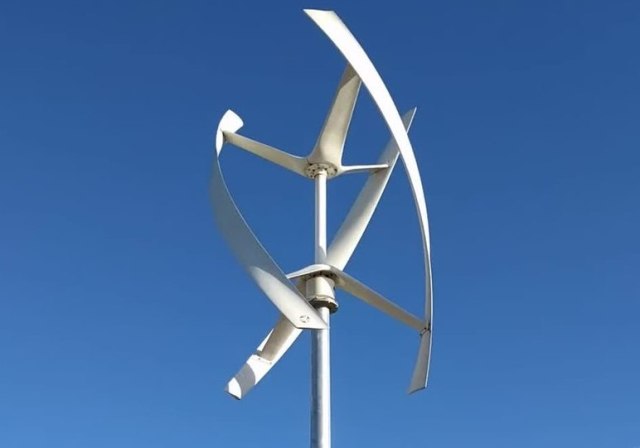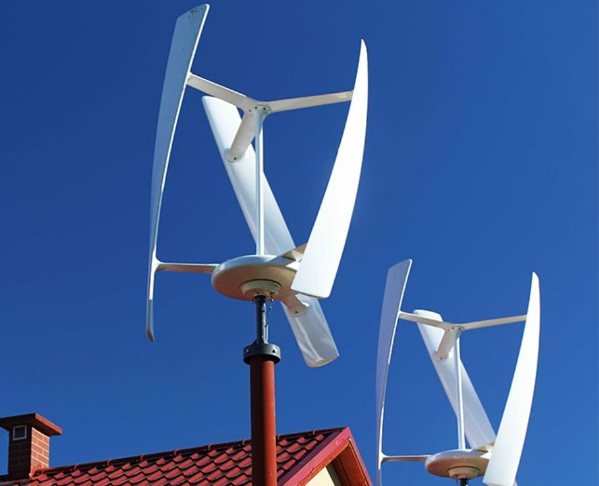Categories: Featured Articles » Autonomous power supply
Number of views: 3712
Comments on the article: 1
Vertical wind generators with Daria rotor
Wind generators based on horizontal axis turbines are not the only possible solution for the high-quality conversion of wind energy into electricity. There are other designs that sometimes show greater efficiency than axial turbines. An example of such an alternative design is a Daria vertical rotor wind generator.
This unusual solution was proposed back in 1931 by the French aircraft designer Georges Darier, who set himself the task of creating such a wind generator that would work in any direction of the wind, without requiring strict orientation.

It was proposed to position the rotor of the generator together with narrow blades vertically, so that in both low and strong winds, a significant part of the air flow does not meet significant aerodynamic drag, but directly presses on the working surfaces of the blades, leading to their rotation.
From this point of view, even the Savonius rotor, proposed in 1922 by the Finnish engineer Sigurd Savonius, is inferior, since it has a limitation of efficiency at high wind speeds. The Darier rotor, in turn, is devoid of these shortcomings, although it does not have such a detailed mathematical description of its work as its predecessor.
It is noteworthy that the Darier rotor in its best performance has three aerodynamic wings, which are mounted on radially located horizontal beams at some distance from the central axis of the rotor.

For this reason, the nature of the air flow around the wings of the Daria rotor is complicated, but the speed of the generator completely eliminates this apparent drawback. Whereas, for example, horizontal-axis turbines, and the same Savonius rotor, lose their efficiency in strong winds, the Darier rotor rotates about 3.5 times faster under similar conditions and does not cause balancing problems.

A vertically located rotating shaft practically does not negatively affect the operation of a wind generator with a Darier rotor, but rather contributes to efficiency, since it is quite thin. Under such conditions, the noise produced by the device is much lower than that of horizontal-axis wind generators, more reminiscent of large fans with propellers.
Here, air flow flows around the blades and the entire generator in any direction evenly, which, by the way, provides tremendous speed of such a unique rotor. At the same time, wind generators with a Daria rotor are simple to manufacture, there is not even a need for a propeller profile here.

However, in fairness, it is worth noting some of the shortcomings of such designs. Due to the Magnus effect, the mast of the generator with the Darier rotor experiences significant loads, so the design must be carried out very accurately, and to this day there is no adequate mathematical model. And the payback of any wind generators over time is long. For this reason, manufacturers of horizontal-axis wind generators are in no hurry to discard the technology that has been working for years.
How to make a wind generator for autonomous power supply at home
See also at i.electricianexp.com
:
